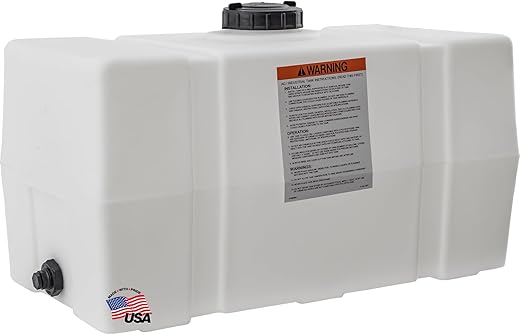









Understanding Wash Tanks: A Comprehensive Guide
When it comes to cleanliness and efficiency in various settings—be it industrial, automotive, or even household—wash tanks play a pivotal role. They serve as the unsung heroes of hygiene, offering a space dedicated to cleaning tools, parts, and even larger items. But what exactly is a wash tank, and why should you consider one? Let’s dive into the depths of wash tanks and explore their significance, types, and how to choose the right one for your needs.
What is a Wash Tank?
At its core, a wash tank is essentially a container designed for soaking and cleaning items. Think of it as a mini cleaning station, where grime and dirt are whisked away, leaving surfaces spotless. Wash tanks can vary significantly in size, shape, and material, depending on their intended use. From small sinks used in kitchens to large industrial tanks, their versatility is one of their most appealing features.
Why Use a Wash Tank?
Have you ever tried to clean a greasy part in your kitchen sink? Frustrating, isn’t it? A dedicated wash tank can save you from that hassle. Here are a few reasons why investing in a wash tank is worth considering:
– **Efficiency**: A wash tank is designed for cleaning, making the process faster and more effective.
– **Space-Saving**: Many models are compact and designed to fit into tight spaces, making them ideal for workshops or garages.
– **Hygiene**: Keeping your cleaning tasks separate from food preparation is essential for maintaining hygiene standards.
Types of Wash Tanks
The world of wash tanks is as diverse as the items you might need to clean. Here’s a rundown of the most common types:
1. Industrial Wash Tanks
Used in manufacturing and heavy industries, these tanks are robust and capable of handling large parts. They often feature advanced cleaning mechanisms like ultrasonic cleaning or heated solutions to remove stubborn contaminants.
2. Automotive Wash Tanks
If you’re a car enthusiast or work in an auto shop, you’ll appreciate a dedicated automotive wash tank. These tanks can handle everything from small engine parts to larger components, ensuring they’re free of oil and grease.
3. Kitchen Wash Tanks
In commercial kitchens, wash tanks are vital for cleaning utensils and equipment. They often come with multiple compartments to separate clean and dirty items, further enhancing hygiene and efficiency.
4. DIY Wash Tanks
For those who love to tinker, DIY wash tanks can be made from various materials. Whether it’s a repurposed plastic tub or a custom-built stainless-steel tank, the sky’s the limit when it comes to creativity.
Choosing the Right Wash Tank
Selecting the perfect wash tank can feel overwhelming, but it doesn’t have to be. Here are some factors to consider that can guide your decision:
– **Purpose**: What do you need the tank for? Identifying the primary use will streamline your options.
– **Size**: Measure the space where you plan to place the tank. A large tank might be appealing, but if it doesn’t fit, it’s not practical.
– **Material**: Stainless steel is durable and resistant to corrosion, while plastic is lighter and often more affordable. Consider your needs carefully.
– **Features**: Some tanks come with additional features like heating elements or filtration systems. Determine what extras will benefit you the most.
Maintaining Your Wash Tank
Once you’ve invested in a wash tank, maintaining it is crucial to ensure its longevity. Here are some tips:
– **Regular Cleaning**: Just like any cleaning tool, your wash tank needs to be cleaned regularly. Use non-abrasive cleaners to avoid damaging the surface.
– **Inspect for Damage**: Check for cracks or leaks routinely. Addressing these issues early can save you from larger problems down the line.
– **Follow Manufacturer Guidelines**: Different tanks have different maintenance needs. Always refer to the user manual for specific instructions.
Conclusion
A wash tank is more than just a container; it’s an essential tool for maintaining cleanliness and efficiency in various settings. Whether you’re looking to enhance your workshop, kitchen, or industrial space, the right wash tank can make all the difference. By understanding the types, choosing wisely, and maintaining your tank, you can ensure it serves you well for years to come.
FAQs
1. Can I use a wash tank for multiple purposes?
Absolutely! Many wash tanks are versatile and can be used for different cleaning tasks. Just ensure to clean it thoroughly between uses to avoid cross-contamination.
2. How often should I clean my wash tank?
Ideally, you should clean your wash tank after each use. However, a thorough deep clean should be done at least once a week, depending on the frequency of use.
3. What is the best material for a wash tank?
Stainless steel is often considered the best material for a wash tank due to its durability, resistance to corrosion, and ease of cleaning. However, the right choice may depend on your specific needs and budget.
